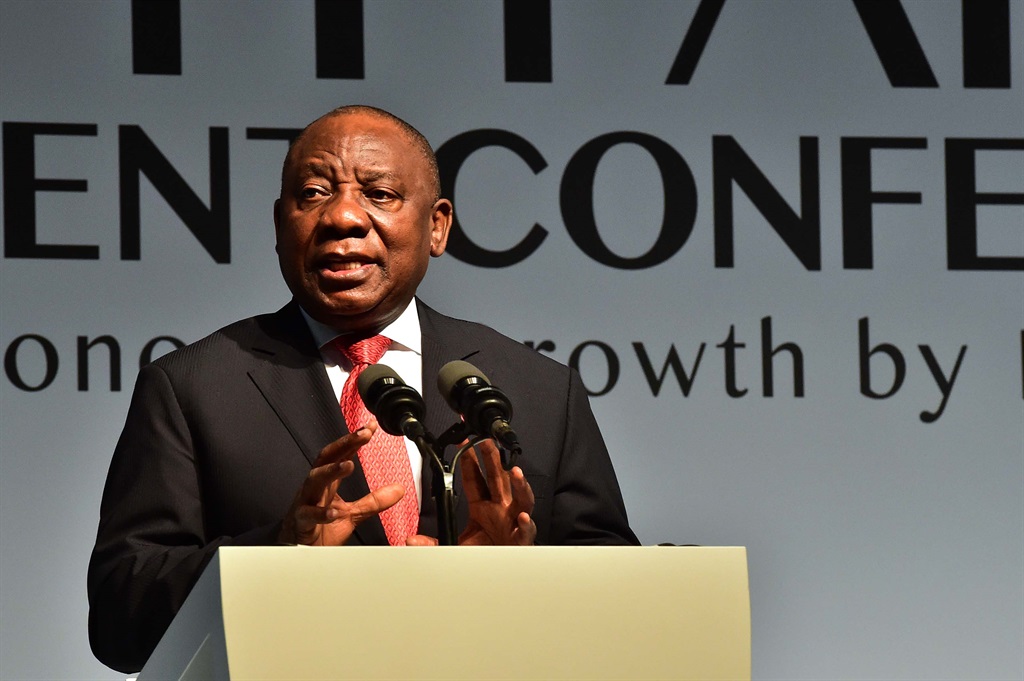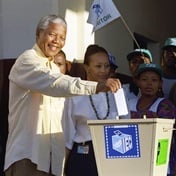
On October 14, Mr Moeletsi Mbeki wrote an article in City Press in which he compared the growth of the South African economy with that of South Korea.
He concluded that in addition to the economic strategies, one must also look at the philosophies of the various leadership environments that guided our country and economic growth.
He also identified three periods of leadership since the dawn of our democracy in 1994; the Mandela Leadership Generation followed by the Exile Leadership Generation and now we have the United Democratic Front (UDF) Leadership Generation. President Cyril Ramaphosa and his team is obviously part of the latter.
Read: Crisis after crisis: What we’ve learnt from 3 generations of leaders
The question is now: what can the UDF Leadership Generation learn from the South Korea, its economic route and political philosophies?
Are these plans applicable to our country and maybe what role could the UDF Leadership Generation play to allow South Africa to save itself and become for Africa what South Korea became globally?
In assisting us to answer these questions we could remind ourselves of the history of economic growth in South Korea.
In October 2016 professor of international commerce and business strategy Hwy-Chang Moon wrote an article in the World Financial Review on the Strategy for South Korea’s Economic Success.
This article offered some very practical perspectives on South Korea’s economic development and introduces a new innovative ABCD model, through which we could learn and possibly gain.
While the ABCD model was originally created to identify the factors that have contributed to South Korea’s economic success, we can come to realise that the model can also be applied to other countries in the southern African region at various levels of analysis (such as government, firms and people).
It can serve as a recommendation to successful growth for developing countries and as a strategic framework for developed countries that are losing their competitiveness.
The ABCD model detailed the four factors that we should observe: agility, benchmarking, convergence, and dedication.
It reminded us that, in the 1960s, South Korea was one of the world’s poorest countries that depended heavily on foreign aid.
Over the span of 50 years, however, South Korea rapidly upgraded its industrial structure, transforming itself from a poor agricultural nation into a global leader in multiple advanced industries, including electronics, automobiles, steel, machinery, and petrochemicals.
Today, South Korea is one of the G20 countries leading the global economy.
Along with economic development, South Korea has been one of the few Asian countries to achieve democratisation and expand its cultural influence (the South Korean Wave) around the globe.
Back to the ABCD model, while scholars attempted to single out the factors of South Korea’s success based on existing theories, they have not been able to holistically explain South Korea’s exceptional growth.
Analysing the South Korean case, place an emphasis on factors such as advanced technologies as the source of growth for developed countries and cheap labour for developing countries.
For example, they attribute the leading position of the United States to its advanced technologies and the initial economic success of South Korea to its cheap labour.
However, what existing theories cannot explain is why certain countries experience greater or faster growth compared to their counterparts that have similar factor conditions.
Western economics also highlights the importance of innovation, raw intelligence and brainpower, to gain competitiveness among similar advanced countries. It rather seems that raw intelligence and innovation are not the only requirements for creating sustainable competitiveness.
In fact, many of today’s most successful firms are neither the originators nor the retainers of cutting edge technologies in their industries.
Through further analysis of the South Korean case, it seems that economic success is cannot be attributed to a mysterious, genetically engineered recipe of innovation or only to naturally inherited resources.
The ABCD factors – agility, benchmarking, convergence, and dedication – are the main pillars that weaved South Korea’s present competitiveness.
For us agility refers to the adaption rate and the rate at which one is able to comprehend and grasp concepts and theories.
Agility also means the aptitude one possesses to reason and understand these changes and adaptions with ease, as well as have the ability to contribute effectively to the changing environment.
In our economic environment it relates to the 4th Industrial revolution and the rapid change of technology.
Learning from the South Korean model, benchmarking is the process of comparing and evaluating by looking at the standards already in place.
Benchmarking occurs when some of our own results, products or processes are compared to another set of similar outputs in competitor countries or to client countries or first world countries, and then compare the success rate of the same projects in developing countries, one would call the process benchmarking.
In South Korea, adopting the proven best practices (such as benchmarking) was a time-efficient approach for South Korean firms to catch up and compete with other international rivals.
From the third factor convergence, we should understand the coming together of two or more different entities.
Convergence, in our case can be between business entities, products, production systems or even opposition businesses and industries.
Lastly, for us dedication refers to the process of accepting and approving to support a process that one deems important and relevant to create order and focus – like obeying laws, be honest and behave ethical.
For us it also means rejecting corruption, fake news and alternative facts or lies.
Being worn out by bad and sad news in our country, dedication also refers to our commitment and loyalty to our choice of a new moral and ethical way of conducting our interaction with each other.
Many papers were written on South Korea’s transformation from a poor, developing to a developed country.
Many commentators discussed the sometimes undemocratic and authoritarian political style under President Park Chung-hee as the cause for Korea’s economic growth and the hard deliberate decisions made in the process.
One reads about the positive and negative impacts of protectionism, export-led growth and the rapid refocusing of society on competitiveness, ‘growth through authoritarianism’ or ‘development through a benevolent dictator’.
One become aware of the strong anti-communist motive which excused excesses, including the absence of a free press, imposition of a nationwide curfew, forced movement of homeless people, and the detention of activists.
These were the talked-about policies during the very successful economic development era of South Korea.
In the end, Park Chung-hee was killed by his former classmate, the director of the Korean Central Intelligence Agency, in October 1979.
South Korea obviously had its own share of bad policies and political disturbance in the process to normalise their democracy.
However, the downfall of the Park’s government, is not the focus of this article but rather the explanations for the economic growth during that time.
I interpreted a number of relevant South Korean policy guidelines that could become part of the South African story:
• Economic discrimination was acknowledged as the process of inserting the element of competition into economic policy, from favouring performing companies on their export record down to villages on their delivery to their citizens.
• South Korea had a land reform programme. Peasants were encouraged to gain land ownership and increase production through a scheme whereby they paid half the crop over to the government for five years. Government attended to modernising rural life through the “New Villages”, focusing on improving basic conditions, then income and infrastructure. They had an education drive. Illiteracy fell from 70% to 15% in a decade as their improved financial situation creating a positive cycle to be able to send their children to school.
• The government gained the attention of business by locking up 12 captains of industry who gained a bad reputation but the government didn’t just strongarm businesses, they also provided the conditions to support business, especially tax breaks and export finance. Entrepreneurs were regularly called to the presidential palace to report on their progress towards a successive five-year national development plan. November 30 became National Export Day, on which companies were publicly ranked by the scale of their achievement in this regard. The administration invested heavily in infrastructure, including the nationwide expressway system and the subway.
• A labour-intensive manufactured export industry was created and the government was willing to innovate and evolve plans from light manufacturing to building heavy industry, focusing on automotive, chemicals, ship-building, steel and electronics.
• The defence of the country inspired economic performance as a pillar of national strength and security, but also drew off considerable financial resources into a domestic arms industry capable of developing and manufacturing high-tech equipment from aircraft to electronics, naval vessels to rockets.
• The country always had a well-functioning civil service.
• At a time, the South Korean citizens were viewed by some as lazy and backward and this was changed to incentivise hard work by increasing the rewards for performance. Famously this was done in the programmes for cement distribution to villages in the early 1970s, when those who were adjudged to be in the top half of performers received double the allotment the next year, and those in the bottom half, received nothing.
In conclusion, South Korea’s transformation from a poor, developing to a developed country is by many known as the “Miracle on the Han River”.
It is clear that it was no miracle, but the result of hard work, discipline, leadership, innovation and education, incentivisation, a focus on growth above all else, and, ultimately, sustainable democracy.
It seems the South Korean story and Mbeki’s article reflects many uneasy and complicated similarities for South Africa’s story.
-------------------------------------------------------------------------------------------------------------------
References:
http://www.worldfinancialreview.com/?p=9102
(Techopedia, 2018).
https://www.businesslive.co.za/rdm/world/2018-10-12-greg-mills-lucky-goldstar-and-the-rockets-how-to-grow-a-country-against-the-odds/
• Coetzee Bester is a former member of Parliament and director of the African Centre of Excellence for Information Ethics at the University of Pretoria




 Publications
Publications
 Partners
Partners








